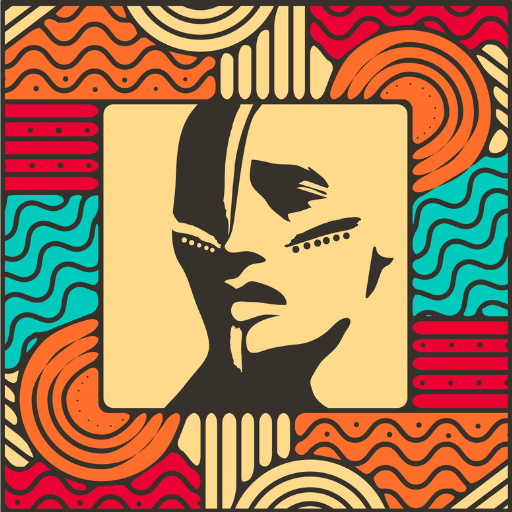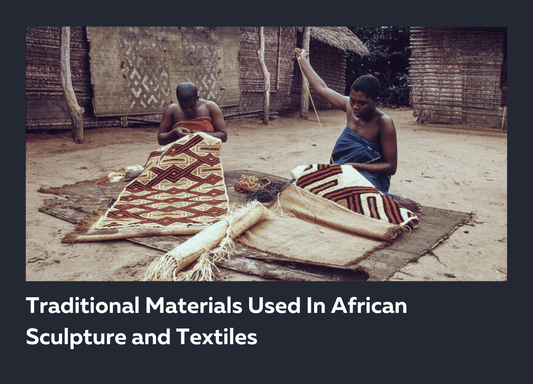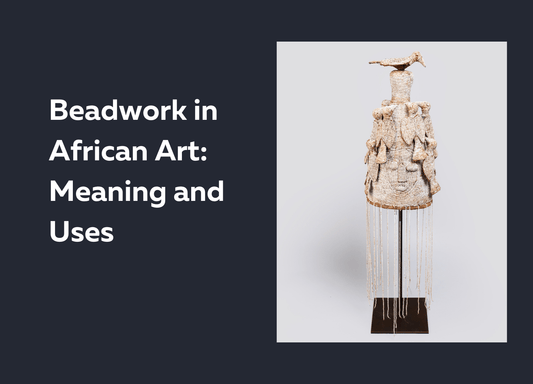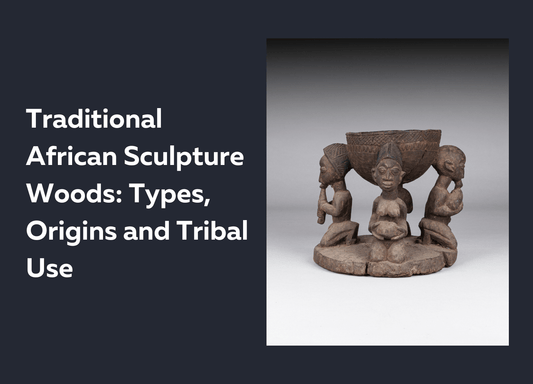
Traditional African Sculpture Woods: Types, Origins and Tribal Use
African tribal sculpture is deeply rooted in cultural identity, spiritual practice and ancestral veneration. A key component in its creation is the selection of wood, each species chosen not only for its physical properties but also for its symbolic significance. This article explores the primary types of wood traditionally used in African sculpture, their regional availability, characteristics and the communities that utilised them.
Ebony (Diospyros spp.)
Ebony (Diospyros spp.) is one of the most prestigious and dense hardwoods used in traditional African sculpture. Predominantly found in Central and West Africa—especially in Cameroon, Gabon, DR Congo, and Nigeria—this deep black wood is favoured by the Fang, Yoruba, Baule, and Luba peoples.
Ebony’s high density, fine grain, and resistance to decay make it ideal for finely detailed works. It is most famously used by the Fang for Byeri reliquary guardian figures, as well as in Yoruba twin figures (ere ibeji) and other sacred carvings. Its natural darkness holds symbolic power, often associated with ancestral spirits and elevated status.
Iroko (Milicia excelsa)
Iroko (Milicia excelsa) is a durable, termite-resistant hardwood found across West Africa, particularly in Nigeria, Ghana, and Côte d’Ivoire. Used extensively by the Yoruba, Akan, and Senufo tribes, iroko is a sacred tree often linked to spiritual and ritual significance.
Its golden to dark brown hue, coupled with natural durability, makes it ideal for shrine figures, ceremonial doors, and architectural sculptures. Yoruba artisans, for instance, carve iroko into thrones, twin figures, and ritual staffs. In Yoruba cosmology, the tree itself is sometimes revered as a spiritual being, reinforcing its importance in art production.

Mpingo (Dalbergia melanoxylon) – African Blackwood
Mpingo (Dalbergia melanoxylon), also known as African blackwood, is native to East and Central Africa, particularly in Tanzania, Mozambique, and Uganda. It is widely used by the Makonde and Zaramo tribes for intricate carvings and spiritual figures.
This exceptionally hard, fine-textured wood is prized for its dark core and ability to take on a smooth, lustrous finish. Makonde artists famously use mpingo for “shetani” spirit figures—dynamic forms that capture abstract and supernatural elements. The wood’s resilience and aesthetic appeal also make it ideal for combs, ritual pipes, and musical instruments.
Okoumé (Aucoumea klaineana)
Okoumé (Aucoumea klaineana) is a softwood species native to Gabon, Equatorial Guinea, and the Republic of Congo. It is especially valued by the Kota and Punu peoples for the creation of ritual objects, including reliquary figures and ceremonial masks.
Light pink to reddish in tone, Okoumé is easy to carve and often enhanced with pigments or white kaolin clay to emphasise facial features. Because of its low density, it is suitable for masks worn during dance and initiation ceremonies. Though not as durable as other woods, its aesthetic adaptability makes it a mainstay in the ritual arts of Central Africa.
Sapele (Entandrophragma cylindricum)
Sapele (Entandrophragma cylindricum) is a reddish-brown hardwood found across Central and West Africa, including the DR Congo, Cameroon, and Nigeria. It is commonly used by the Songye and Luba tribes for religious and ceremonial carvings.
Its interlocked grain and smooth finish make it an excellent choice for nkisi nkondi power figures, ancestor effigies, and ceremonial stools. Luba artists often choose sapele for memory boards (lukasa) and staff carvings. The wood’s natural strength and lustre enhance the visual and symbolic power of these artefacts.
Baobab (Adansonia digitata)
The baobab tree (Adansonia digitata) is iconic across the Sahel and savannah zones of West Africa, particularly in Mali, Senegal, and Burkina Faso. The Dogon and Bamana peoples use baobab wood in ritual contexts, despite its soft and fibrous nature.
Not typically used for permanent sculpture due to its perishability, baobab wood is reserved for ephemeral ritual objects, altars, or ceremonial installations. In Dogon mythology, the baobab holds cosmic symbolism, often representing life, origins, or transition. Its use in art, though temporary, carries deep ancestral and cosmological meaning.

Conclusion
Understanding the woods used in African sculpture is essential to appreciating the craftsmanship, cultural context and spiritual function of these works. From the ebony reliquaries of the Fang to the blackwood spirit figures of the Makonde, each choice of material reflects centuries of tribal knowledge, artistic heritage, and environmental adaptation.



